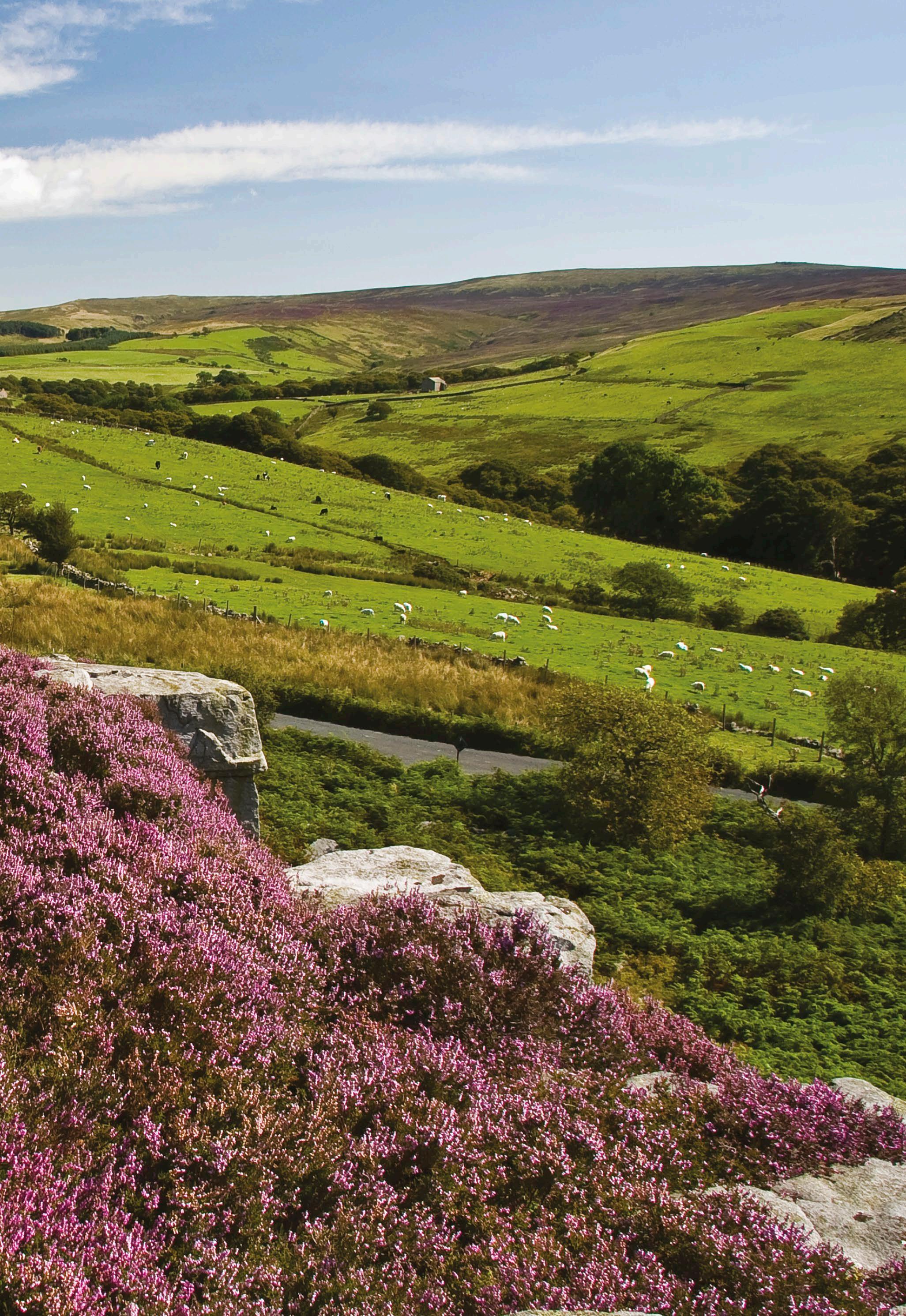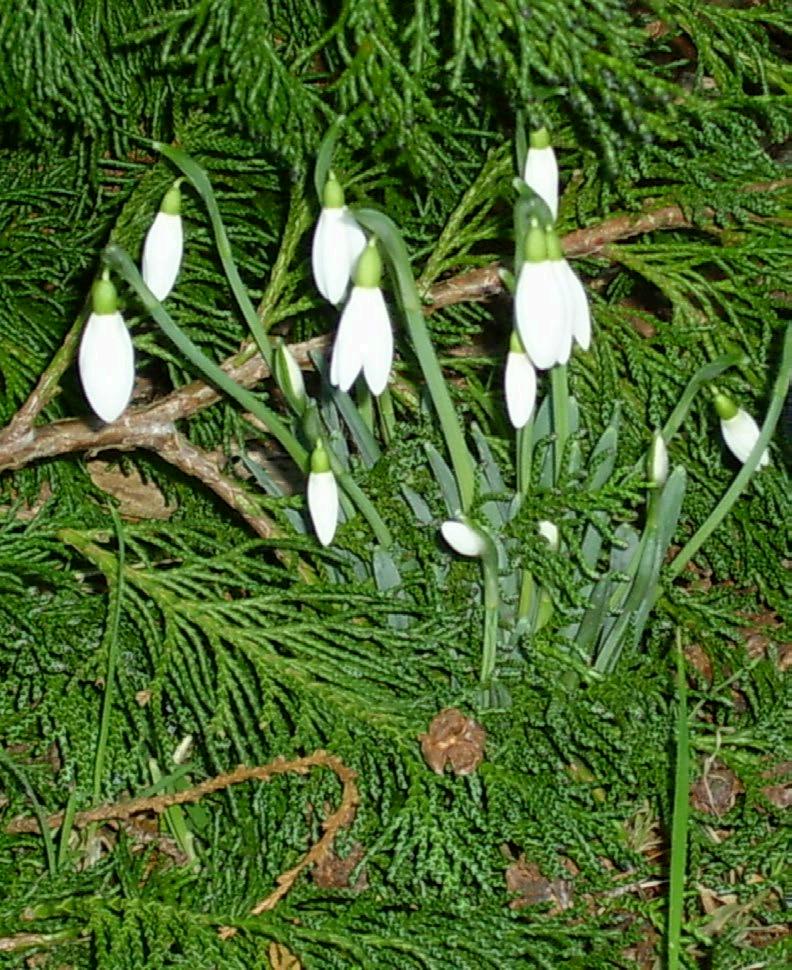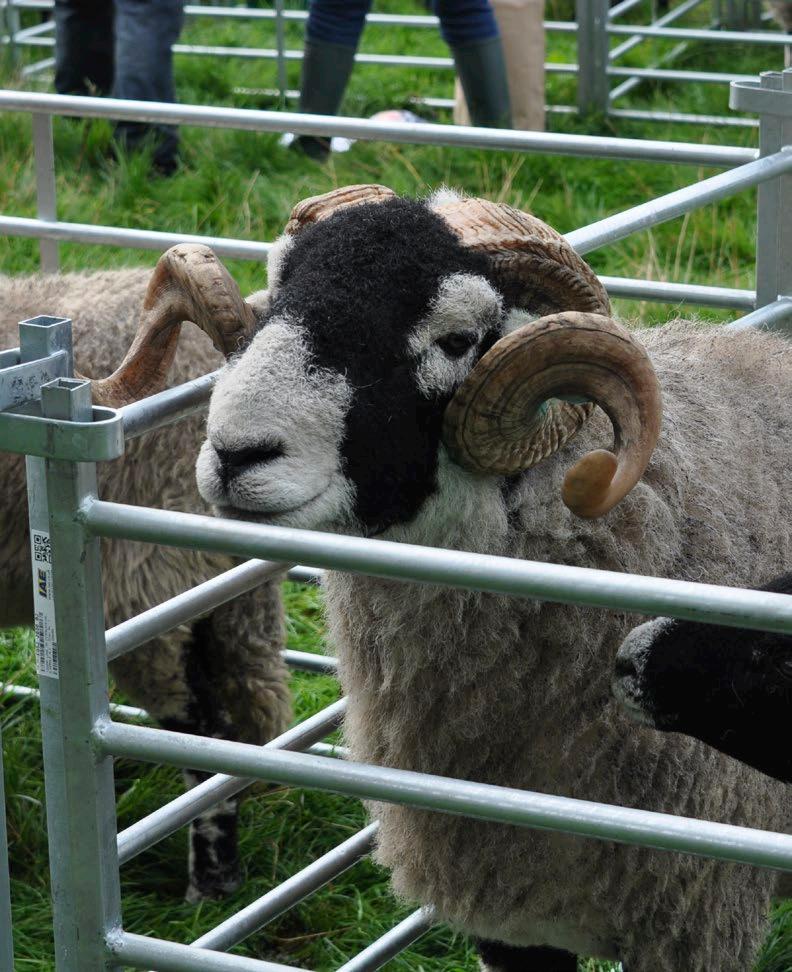
4 minute read
Nature’s Calendar
by Hetty Byrne
Nature’s Calendar

Advertisement
Unmissable natural spectacles to look out for in the Forest of Bowland throughout the year
© Paul Booth
© Charles Camm


February
Drifts of Delicate Snowdrops Delicate white snowdrops peeking shyly through the frost are a welcome reminder – after the often harsh upland winter – that spring is on its way. Snowdrops begin to appear at various locations across the AONB. These pretty harbingers of the warmer days ahead do well in the cool damp climate of the Forest of Bowland and can be spotted as early as December, lasting until the end of February.
Where: Scattered across the AONB in lightly shaded woodland areas
Top Tip: Good weather towards the end of the month can tempt lapwings back onto their farmland breeding territories.
March
Boxing Hares These magnificent creatures lose some of their natural shyness in early spring as they come down off the fells in search of a mate in the lowland meadows. The boxing matches happen when females rebuff the attention of overly amorous males.
Where: Hares are likely to be active across the AONB throughout March, but the rich pastureland around Waddington and Bashall Eaves is a real hotspot for boxing hares.
Top tip: Early morning or dusk is the best time to spot boxing hares – they tend to be more wary during the daytime.
April
The Waders Return Oystercatchers, redshank, snipe and especially curlew return from their winter quarters on the coast to stake out their breeding territory early in spring. Initially, the curlew remain silent, but as temperatures rise during March, their plaintive ‘bubbling’ calls can be heard across the valleys.
Where: Curlew need damp, rough grazing land on the edge of the uplands to breed successfully and the Forest of Bowland is one of their last strongholds in England. The wet grassland around Chipping is a great place to spot them and also listen out for the unearthly high frequency hum of snipe ‘drumming’ to attract a mate.

May
Flight of the Skydancers The hen harrier – one of England’s rarest raptors – is the emblem of the Forest of Bowland AONB. The good news is that the local population has seen a modest increase in recent years, so you may be lucky enough to spot these majestic birds of prey ‘sky dancing’ over the moorland. This complex courtship ritual involves aerobatic displays over their territory, which strengthens the pair bond.
Where: Hen harrier nesting sites in Bowland are carefully monitored to protect the birds from disturbance. Sticking to footpaths during the breeding season (mid-March to the end of July) can help to protect other ground nesting birds too. If you do spot a hen harrier please let James Bray of the RSPB know on 07968 129570.

© Alan Owens
© Richard Saunders, Natural Engalnd
© Mark Sutcliffe
© Graham Cooper


June
Fluffy White Clouds For a brief period in early summer, the peat uplands of Bowland are dominated by fluffy white flecks dancing on the breeze. On the wetter ground above the valleys, the soft seed heads of Common cottongrass (eriophorum angustifolium) are endemic among the peat bogs and emblematic of the wide-open spaces of the uplands.
On a warm, dry, early June day, when the seed heads are at their frothiest, staring at the endless expanses of cottongrass as they sway gently on the breeze is a truly mesmerizing experience akin to being adrift on an ocean of gently swirling spindrift.
July
A Riot of Colour While many lowland meadows will have been mown for hay or silage by Midsummer, a handful of meadows in Bowland are left much later before mowing to give the native wildflowers time to flower and set seed. In July these natural wildflower meadows are a riot of colour which positively hum to the soundtrack of a million pollinators doing their thing.
When: National Meadows Day – a celebration of all things meadowy! – takes place on Saturday 3rd July. Take a look at the Festival Bowland events programme to see what’s planned in the AONB. www.forestofbowland.com/FestivalBowland-Events
September
Harvest Celebrations Celebrate the season of mist and mellow fruitfulness at one of Bowland’s lively autumn festivals. The annual village show is a highpoint of the rural social calendar where locals and visitors alike mingle amongst the stalls, craft tents and livestock pens.
When: Shows throughout late summer and early autumn – visit www.forestofbowland.com/family-fun for more information. Check current Covid restrictions before visiting.

Top tip: Bring your wellies – you’ll blend in with the locals and keep your feet dry.
October
Dark Skies Discovery With very few centres of population, and hardly any street lighting, the Forest of Bowland has almost zero light pollution, affording visitors breathtaking views of the night sky. Spot planets, constellations, galaxies and nebulae you’ll never have seen before and keep an eye out for shooting stars!
Where: Beacon Fell Visitor Centre; Crook o’ Lune Picnic Site; Gisburn Forest Hub; Slaidburn Visitor Car Park.
When: February Half Term – online events – check Festival Bowland event listings for details: www.forestofbowland.com/FestivalBowland-Events
Top Tip: Book early – these events sell out very quickly

© David McNamee
© Robert Ince










